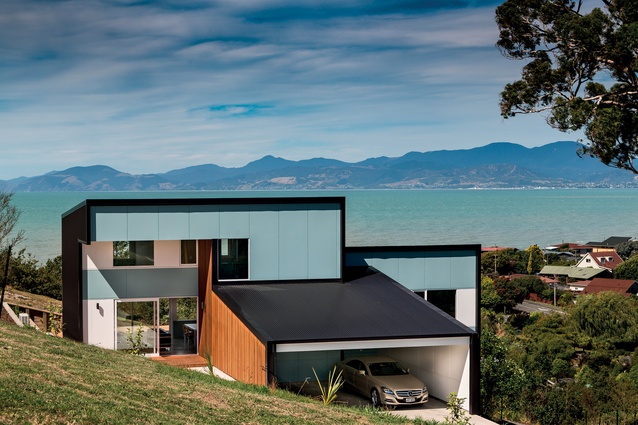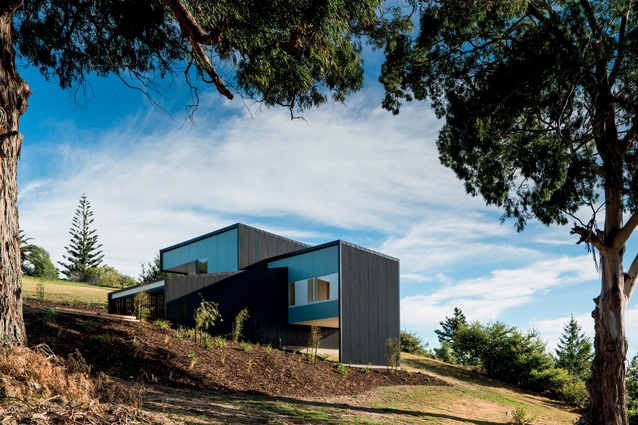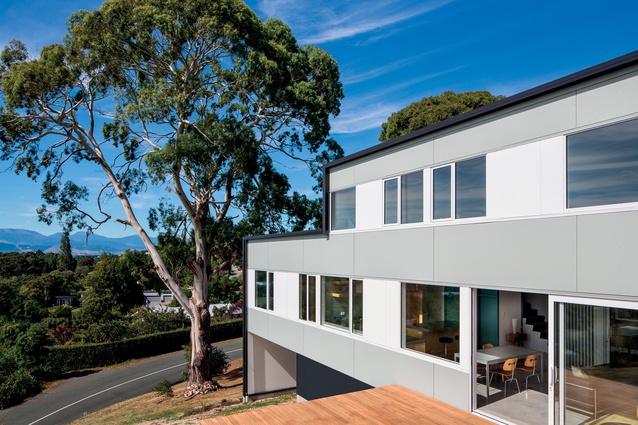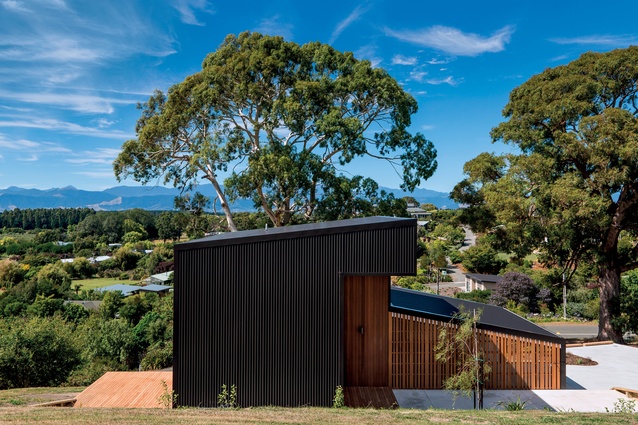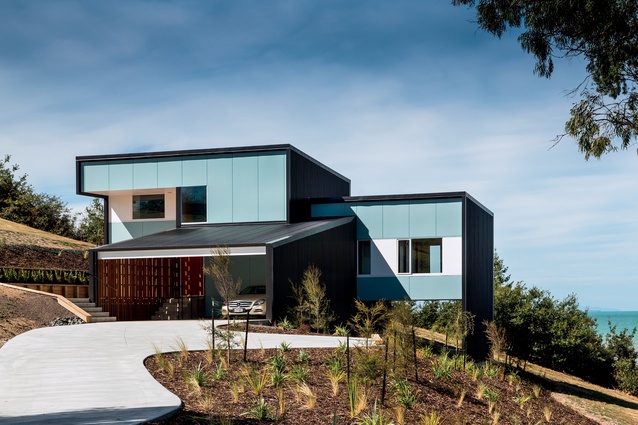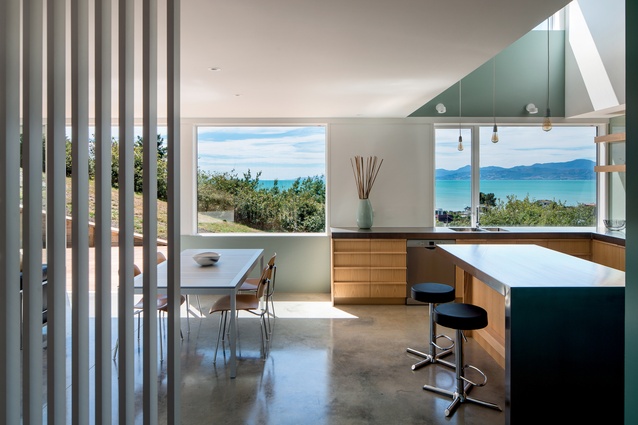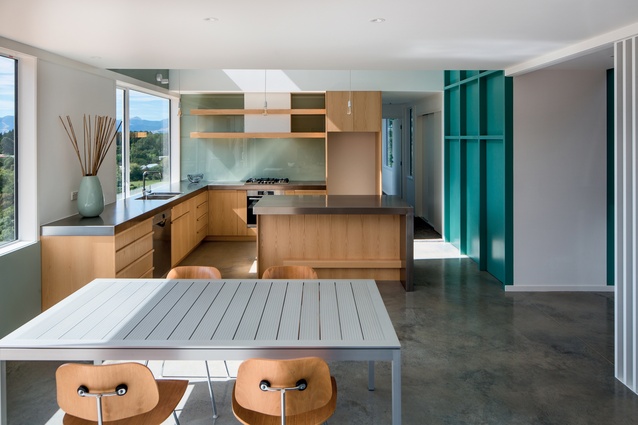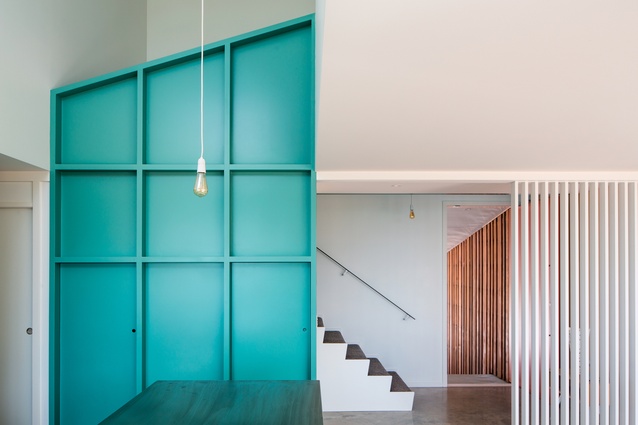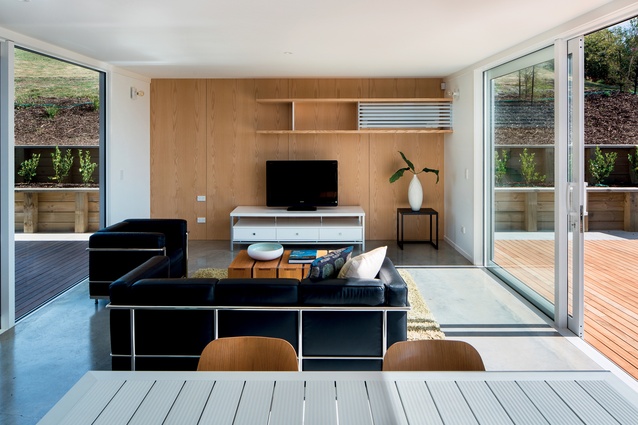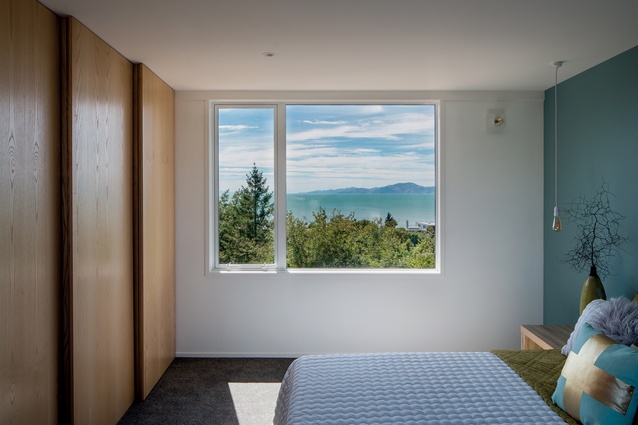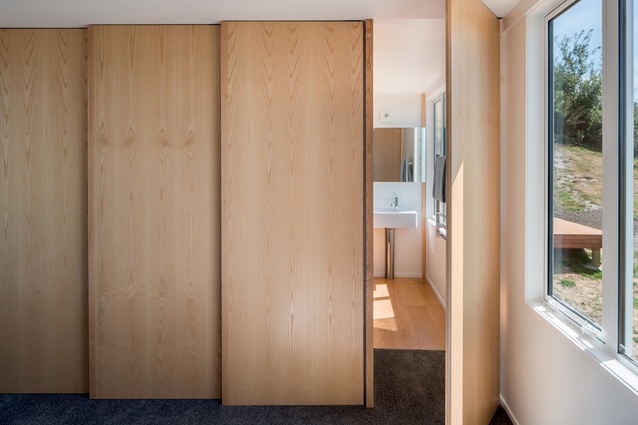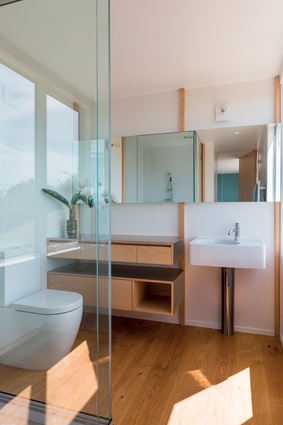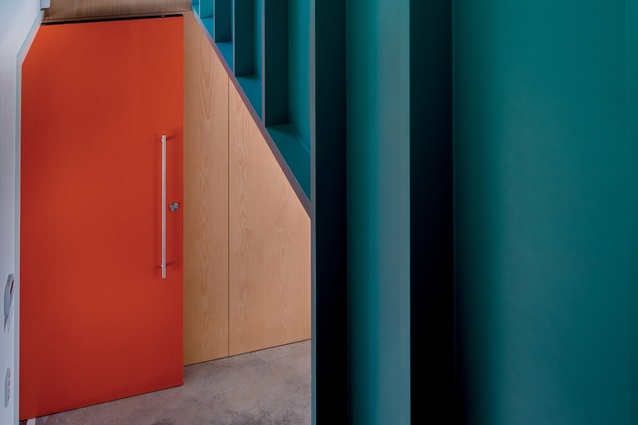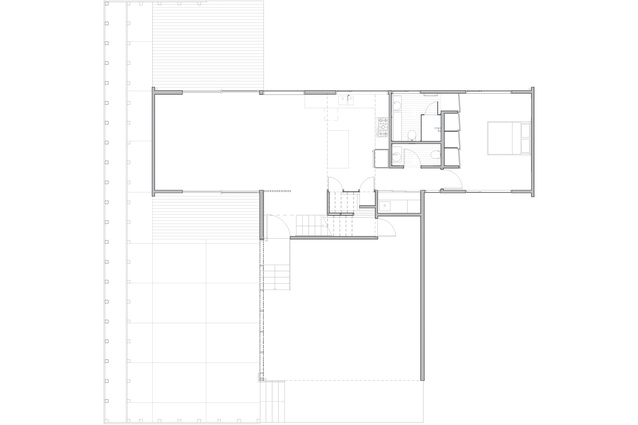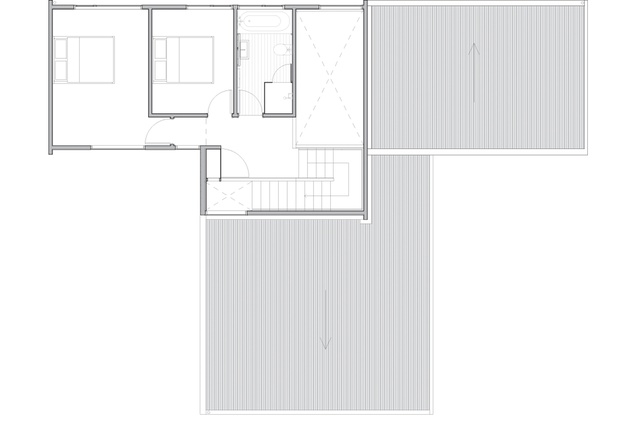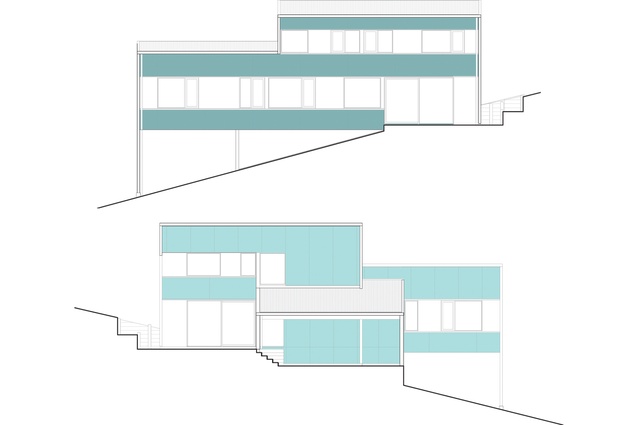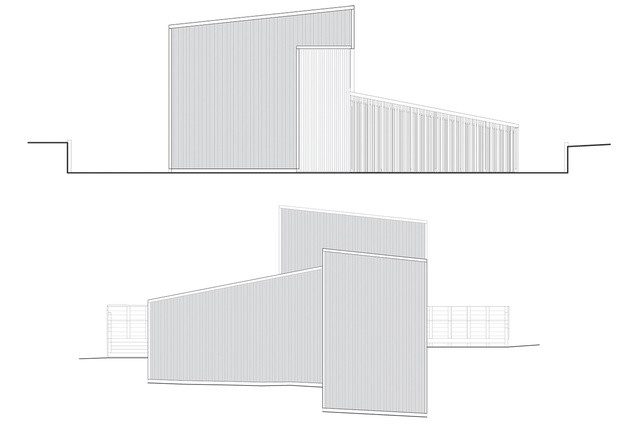Inescapable views: Ruby House
The aqua-coloured waters of Ruby Bay and its surrounding green hilltops within the Abel Tasman region form the backdrop for this stunning house.
The original owners commissioned Wellington-based Parsonson Architects to build Ruby Bay House, having worked with the practice previously on a bach at Peka Peka Beach near Waikanae. Their plan was to build two houses on this site: ‘a spec house’ to sell on and another home for them to live in, higher up on what is a steep piece of land. They wanted a design for Ruby Bay House that they’d be happy to look at from their own home so chose the architects to design both structures to work together, whilst maintaining privacy for the occupants of each.
The appearance of their own house, which is currently under construction, will be quite different from that of Ruby Bay House; it will be clad in Corten steel and will be cantilevered out of the hillside but, in a similar manner to that of the house below, it will look to the hills and the sea for inspiration.
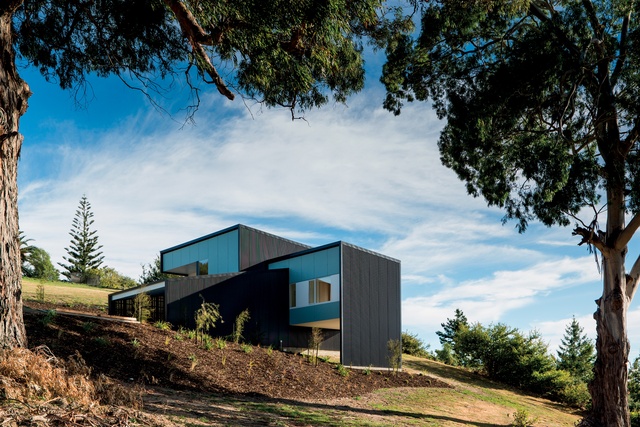
Unfortunately, the Kaikoura earthquakes struck during the building of Ruby Bay House, creating some delays, and, inevitably, both designs have been fully earthquake-proofed.
Once completed, Ruby Bay House was on the property market for only 10 days before a British-born couple, Carolyn Hall and Tim Parkinson, who then lived in Queenstown, fell in love with the place. As soon as they saw it, they put an offer in straight away. Their captivation with the place comes as no surprise; “You can’t escape the view in this house, even when you’re in the kitchen,” explains Parkinson. Indeed, looking out from the main areas, you’re greeted by a panorama of aqua ocean and soft-green vegetation.
This home is totally filled with light and warmth. Large sliding doors on either side of the living space open up to decked areas so the occupants can move between the two sides, depending on the orientation of the sun and the direction of the wind. “The decks almost triple our living space in the summer months,” states Parkinson, “And, even during the winter, we can still use our outdoor areas.”
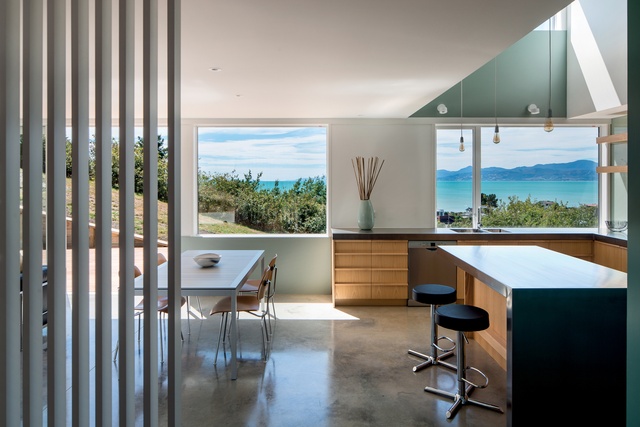
The architect has used practical strategies to conserve energy. “We have a natural concrete slab that is insulated underneath; the sunlight lands on it and heats it up during the day. The slab releases the heat when the sun goes down,” says Parsonson.
“And the house is well orientated to the sun as it tracks around – and double-glazed windows and good insulation make a big difference too.” In fact, the house barely needs heating and, on hot summer days, there is good, natural through-ventilation when both sets of doors are opened to cool down the interior.
Externally, the architect has wrapped corrugated iron roof cladding right over the house. “No windows on two of the elevations gives the house a simple graphic appearance,” he says. “There is economy in doing that. You can focus just on windows on two façades effectively, with all the windows facing the hills or the sea.”
Since this was a spec house design, it was important to keep the living spaces on a flat level to make it relatively easy for buyers to understand. “There’s quite a cross-fall to the site, so we propped up the end bedroom on a section of wall so it’s hollow underneath where the land just trundles along.” There are aspects of the design that are slightly 1950s, suggests Parsonson. “The seaside elevation is very simple with strip windows and this creates a bach-type feel without being too ‘bachy’,” he says.
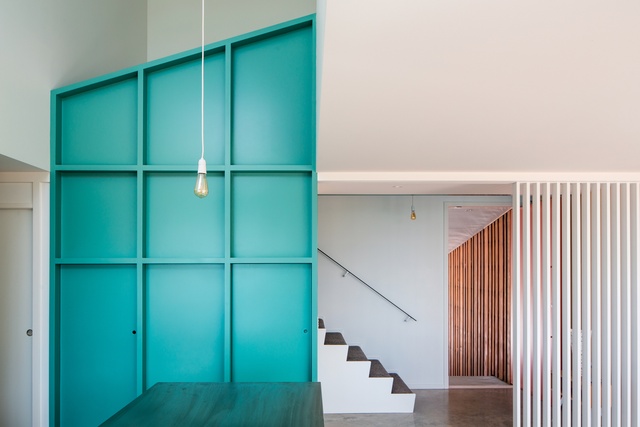
Material Selector
Gerald Parsonson talks about his choices for the cladding and cabinetry used in this home.
What is the coloured cladding on the exterior constructed from?

The panels are Eterpan from Pacific Build Supply; it is a fibre cement product that is relatively economical to put up, paint and maintain, unlike weatherboards. The owner really liked the product as it’s robust and straightforward; you just screw or nail it in place over a cavity. The owner painted it with Resene paint (Half Washed Green and Destiny).
With this product, you can’t go too dark with the paint colour as the material becomes too stressed – it moves more and can cause issues with the nailing. But the suppliers give you a light-reflective limit. There is a clear definition between the panels and the corrugated iron, Colorsteel Maxx, which can be sited close to the sea.
Did you design the timber cabinetry, which is used extensively?
Yes, we designed all the cabinetry and used strips of wood as handles, which was a bit fiddly and expensive but the clients were keen to make it look good. In the main bedroom downstairs, pivoting wood panels open into the wardrobe and one opens into the en suite bathroom.

